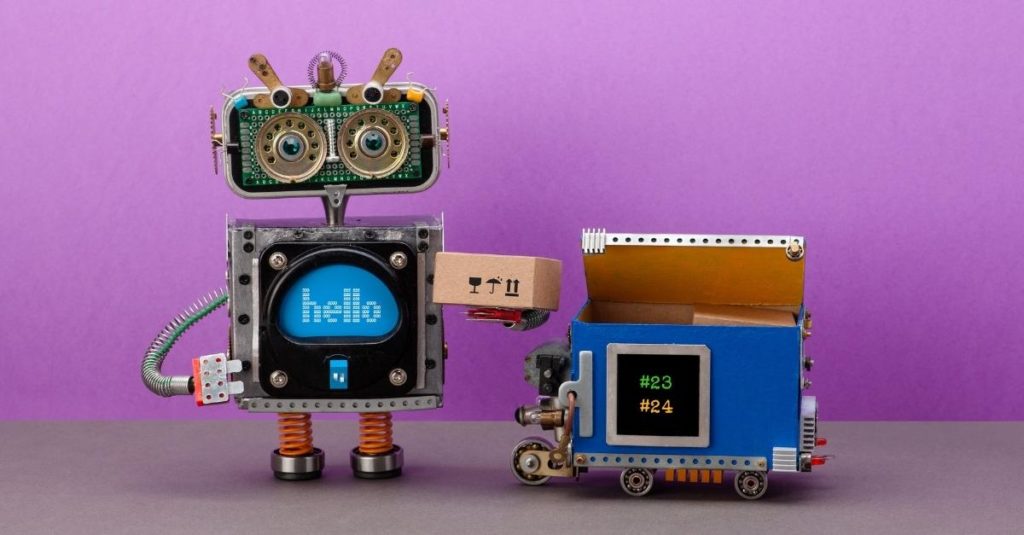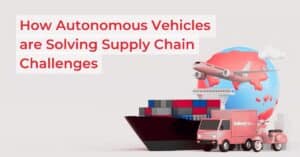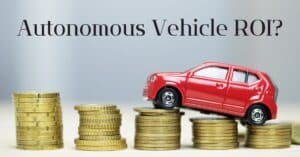Seems like there is a new Robot Delivery service in the news almost every day, and according to research, the growth trend has only just started – the global delivery robot market is expected to grow from $3.53 billion in 2020 to $30.05 billion by 2030.
What’s driving this huge growth? Let’s look at the use cases and their drivers.
Deployments and use cases
There are sidewalk delivery robot deployments on every continent and too many companies to list in a short article.
Leading examples include European and U.S. college campuses, where Starship Technology and Kiwibot robots deliver fresh meals from local restaurants and campus meal facilities on college campuses.
Los Angeles based Coco recently announced a second-generation robot, the launch of its operation in Austin, and additional expansion plans.
Toyota deployed delivery robots tasked with bringing food, drinks, and equipment to athletes throughout the Tokyo 2020 Olympics (The winter Olympics took it up a notch with robots preparing food, performing concierge services, and cleaning up, but that is subject for a separate article).
Cartken has started pilots across the globe delivering food from delivery-only kitchens to customers in Miami, to delivering convenience store items to students of Erasmus University in Rotterdam, and to provide indoor and curbside delivery for Starbucks customers at a popular mall in Japan.
And the list goes on…
Are delivery robots here to stay?
Fun fact – when researching this article, I was somewhat surprised to find a TechCrunch article from 2016 titled Ground delivery robots: Passing fancy or next wave?
It’s surprising to realize that seven years and dozens of rollouts later, that is still a common question. While there is no denying the growing popularity of delivery robots, there are voices who question the staying power of that popularity, often attributed to COVID-19.
There are several fundamental shifts that point to the fact that delivery robots are in fact a segment that is expected to grow, and fast.
Instant gratification society
To be clear, the instant delivery trend was around long before anyone imagined a bat could have such a profound impact on our society.
Doordash, Wolt, and Amazon Express were all alive and growing in popularity before Covid. Social distancing and lockdown have helped accelerate the trend and spurred the adoption of instant delivery in additional domains. And just like Covid is not expected to disappear from our lives, neither are the changes in consumer behaviors that have been accelerated by it. Quite the contrary: Instant delivery is expanding to more domains such as local convenience stores and pharmacies or high-end personal goods.
Labor shortage
The labor shortage is a very real issue that is contributing its share to the strained global supply chain crisis. The reasons for the shortage vary by country as well as by shipping stage; shipping, long-haul, and last-mile delivery have very different dynamics.
In last-mile deliveries specifically, there are a number of short-term and long-term factors that create a perfect storm, a huge demand spike combined with supply pressure is creating a last-mile delivery crisis. Here are a few of the drivers:
- Demand spike: Consumer demand for goods and especially home-delivered goods has risen exponentially over the past two years, fueling demand for last-mile delivery services. This demand is a result of the instant gratification trend, a macro shift to e-commerce, and the pandemic.
- Driver Shortage: Driving is close to the top of the list of jobs that have been part of the “Great Resignation,” covering at least Dull and Dangerous of the 3-D jobs. The US is facing a shortage of not less than 60,000 truck drivers; in the UK, Brexit has forced thousands of foreign drivers to leave the country. Another factor driving workers away is the rising pressure felt by drivers due to heavier traffic law enforcement, and the direct link between the number of deliveries made and wages.
- Changing environment: The steep rise in deliveries combined with inner-city congestion is causing municipalities to crack down on last-mile delivery services and increase enforcement of parking and traffic laws.
The labor shortage is creating a very real gap in the expansion plans of rapid delivery retailers.
Carbon reduction and traffic congestion
Last-mile delivery contributes 20% of inner-city pollution and accounts for 40% of delivery cost, according to researchers in Barcelona.
In Tokyo, for example, research by the World Economic Forum and McKinsey predicts e-commerce volumes will rise by 85% percent by 2030, leading to a 71% percent increase in the number of delivery vehicles covering 25% more miles. In addition to the added congestion, this will lead to a 20% increase in carbon dioxide emissions.
As the demand for last-mile delivery services increases, this figure is causing both policymakers and service providers to act.
Local authorities are not only increasing enforcement but also implementing policy measures. These include introducing low or zero-emission zones, congestion taxes, and pedestrian zones.
Electric-powered robots with small form factors traveling short distances at low speeds have the potential to reduce both emissions and congestion and conform with new laws.
After all, it doesn’t require a two-ton vehicle to carry a two-pound delivery.
The EU has expressed its view on this matter by putting its money where its mouth is: The European Investment Bank (EIB) recently granted funding of 50M Euro to Starship Technologies, citing sustainable transport as a justification.
Safety
Delivery and specifically instant delivery drivers are disproportionately involved in accidents. In Turkey, the number of deaths of delivery drivers rose tenfold during the pandemic. Research into the “gig” economy conducted by University College London found that 42% of respondents said their vehicle had been damaged following an accident while working, and 10% confirmed that someone had been injured.
Delivery robots have safety mechanisms baked into the technology and remove the psychological pressure element. They improve safety for pedestrians and for drivers, who in many cases are actually sitting in the comfort of their homes.
Why delivery robots?
There are numerous attempts at solving the last mile delivery crisis, so why are sidewalk delivery robots gaining so much traction?
Driverless delivery robots have a small form factor. The small form factor implies a low carbon and congestion footprint that makes them popular with policymakers, but also implies a relatively low price tag. Operational expenses are reduced through the efficient use of remote operators or autonomous driving systems.
Delivery robots can be placed in or near the local business or distribution center, cutting down on delivery lead times. Service is further enhanced by the contactless experience, which is what customers prefer.
Sharing the sidewalk has its challenges
In December 2021, The Toronto City Council put a brake on sidewalk robots pending further review. The reasoning is simple and seemingly quite compelling: Delivery robots travel on sidewalks and they take up space that was designed and intended for use by pedestrians, yet they occupy space and behave differently than humans do. Arguments against large scale deployment include:
- Contribution to overcrowding of a public utility designed for human use, and use of that space for commercial purposes it was not designed for.
- Creating a possible hazard for people with physical or mental disabilities, or those in need of assistance.
It is important to note that the ban is only temporary until further analysis and that it was accompanied by a decision to create a government-backed “Transportation Innovation Challenge in the second quarter of 2022.”
Another city that limited sidewalk delivery robots is San Francisco, which banned their operation in certain areas in late 2017. Since then, San Francisco has granted Serve Robotics a permit to test sidewalk deliveries in the city.
Delivery robots and the role of teleoperation
Some of the key advantages of sidewalk delivery robots are a result of their form factor – small and lightweight. This was enabled by the removal of the driver and assigning them to transport only the goods delivered. The removal of the driver is enabled by autonomous driving, teleoperation, or a combination of both.
Delivery Robot pioneers such as Starship and Coco in fact started their operation using teleoperation to remotely operate their robots and develop autonomy in the process, using the accumulated data to train the AI models. Starship robots now run fully autonomously more than 90% of the time, turning to remote operators for guidance only when they encounter situations they don’t know how to handle.
This unique approach is what helped turn delivery robots into the number one autonomous vehicle on the streets today, with by far the largest number of operational units and paying customers.
Teleoperation helped put delivery robots to use early, but also expands job accessibility to more people. During the pandemic, social distancing prevented some drivers from working. Teleoperation helped keep them working from the safety of their homes.
Teleoperation allows inclusivity for more workers with people with low mobility being just one example. The ability to work from home in itself reduces congestion and carbon emissions and improves job accessibility in remote areas.
Summary
Delivery and other robots are becoming a common sight on city streets and sidewalks. Their small form factor and low speed create societal and commercial benefits, have made them the leading driverless vehicle use case.
The value they provide, as well as underlying trends to which they respond, are a strong indication that delivery robots are on a rapid growth trajectory.
"*" indicates required fields *By clicking submit I agree to receive emails from DriveU.auto. I understand that I may opt-out of Driveu.auto subscriptions at any time.Need teleoperation-grade connectivity?






